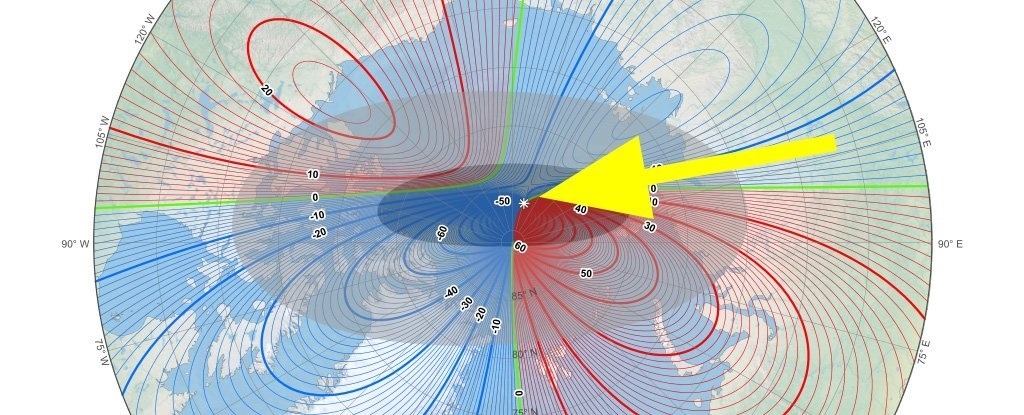Earth’s magnetic North Pole moving towards Siberia
| Date :21-Dec-2019 |

OSLO :
Earth’s magnetic field, the North pole is never truly stationary and has travelled around since it was discovered in 1831, but in the past few decades, it has accelerated to an average speed of 55 kilometres per year.
OUR planet is never still and its poles are on a move. The geographic north pole is in the same place it always was, but its magnetic counterpart that we know as the ‘N’ on the compass is now drifting from the Canadian Arctic towards Siberia at record-breaking speeds that has scientists puzzled. Although the pace of the movement is remarkable, the movement itself isn’t. Due to fluctuations in the flow of molten iron within the Earth’s core that affects Earth’s magnetic field, the North pole is never truly stationary and has travelled around 2,250 kilometres since it was discovered in 1831.
According to the NOAA’s National Centres for Environmental Information (NCEI), this wandering has generally been quite slow, allowing scientists to keep a track of its position fairly easily. However, it has quickened in the past few decades, accelerating to an average speed of 55 kilometres per year. Although scientists can’t fully explain the core fluctuations that are driving North pole’s restlessness, they can always map Earth’s magnetic field and calculate its rate of change over time, which helps us estimate how it may be distributed in the future.
This system is called World Magnetic Model (WMM), a representation of the magnetic field observations that powers everything from navigational tools like GPS to mapping services and consumer compass apps, and is used by NASA, the FAA, and the military, among other institutions. Despite its importance, the WMM is not set in stone and the readings have to be updated every five years to keep the model accurate. The latest surprising movement of the North pole has pushed the WMM bodies, the NCEI and the BGS to update the model last week mid-cycle.
The refresh usually comes a whole year ahead of schedule, but due to the unusual pace the magnetic north pole has been shifting, the WMM readings have been outdated faster than usual this time around. While the speed fluctuations seem abrupt, it is relatively a more moderate range of pole movement that has happened in Earth’s history. Magnetic poles can actually flip if they move far enough out of position and this is something that has happened every few hundred of thousands of years. No one can tell for certain when that might happen next, but if it does, there will be serious implications on human life. Meanwhile, the new WMM data is good until 2025.